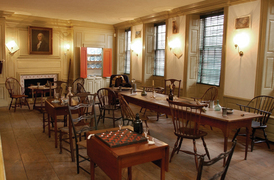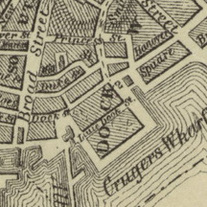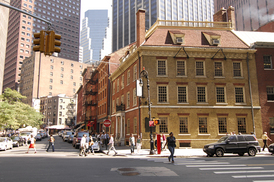Fraunces Tavern
Around the time of the American Revolution, everyone in New York knew Samuel Fraunces. He ran the best tavern in town, supported the patriot cause, and was a trusted aid to George Washington himself. His daughter, Phoebe, once saved the General’s life when she foiled a plot to poison him. But today little is known about Samuel Fraunces—even his race is a bit of a mystery. He was called “Black Sam,” but he was, and still is, described as being white, Negro, “colored,” Haitian, and mulatto.
Samuel Fraunces came to New York City from the Caribbean and in 1762 opened what is now called Fraunces Tavern. From the start his tavern was famous for its great food and fine wines, but today Fraunces Tavern is known for the history that was made there: it’s where New York’s Sons of Liberty met and planned their own Boston-style tea party. After the group dumped English tea in the harbor, the British occupied the city, and Samuel Fraunces moved his family to safety in New Jersey. Then he signed up as a patriot soldier and fought with George Washington. He also spied for the patriot cause, gave money, and housed and fed American soldiers and prisoners. When the British finally sailed away, a great celebration in honor of “Evacuation Day” was held in the Fraunces Tavern. A week later, Washington made a famous farewell speech to his officers there.
After the war Washington thanked Fraunces for giving so much “…to the cause of our country and its independence and freedom,” and Congress sent him a letter citing both his generous support of American prisoners and his secret service during the war. Samuel Fraunces died in 1795.
This entry contributed by
Curriculum Concepts International
Related Media
Video

|
Kenneth Jackson, Columbia University Professor of History, describes Fraunces' Tavern and its role in the Revolutionary War.
|
Images

|
Today Fraunces Tavern is a museum operated by the Sons of the Revolution. Built in 1719 as an elegant home, the building is one of the oldest standing in Manhattan.
|

|
A view Fraunces' Tavern as it looked in 1777.
|

|
Samuel Fraunces, known as “Black Sam,” bought 54 Pearl Street for a tavern in 1762. Well known in its day, Fraunces Tavern became famous for the history made there.
|






